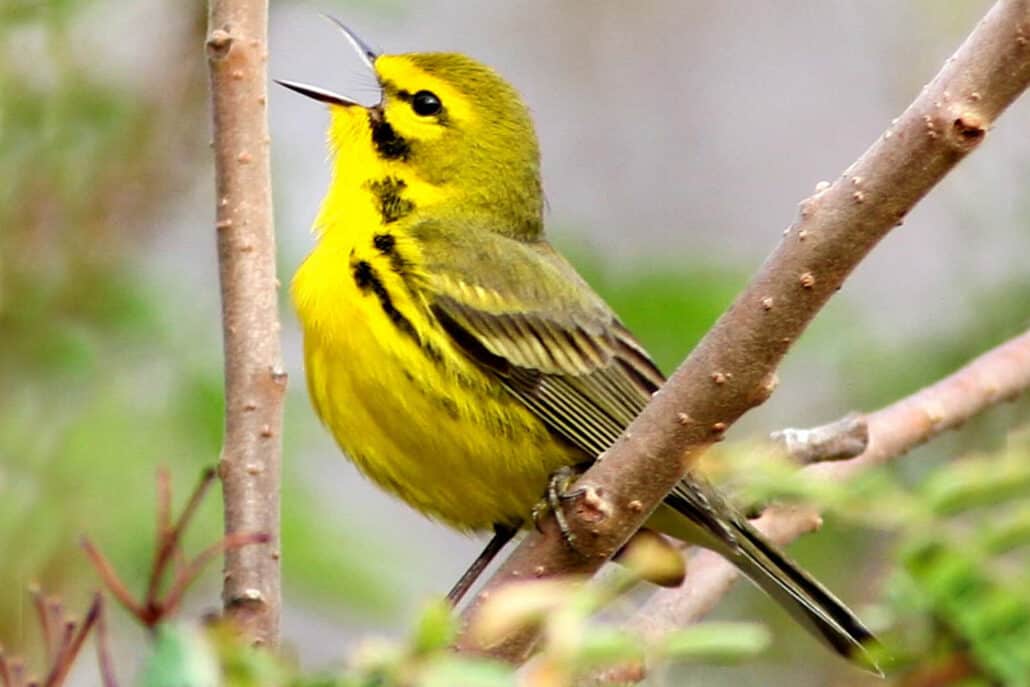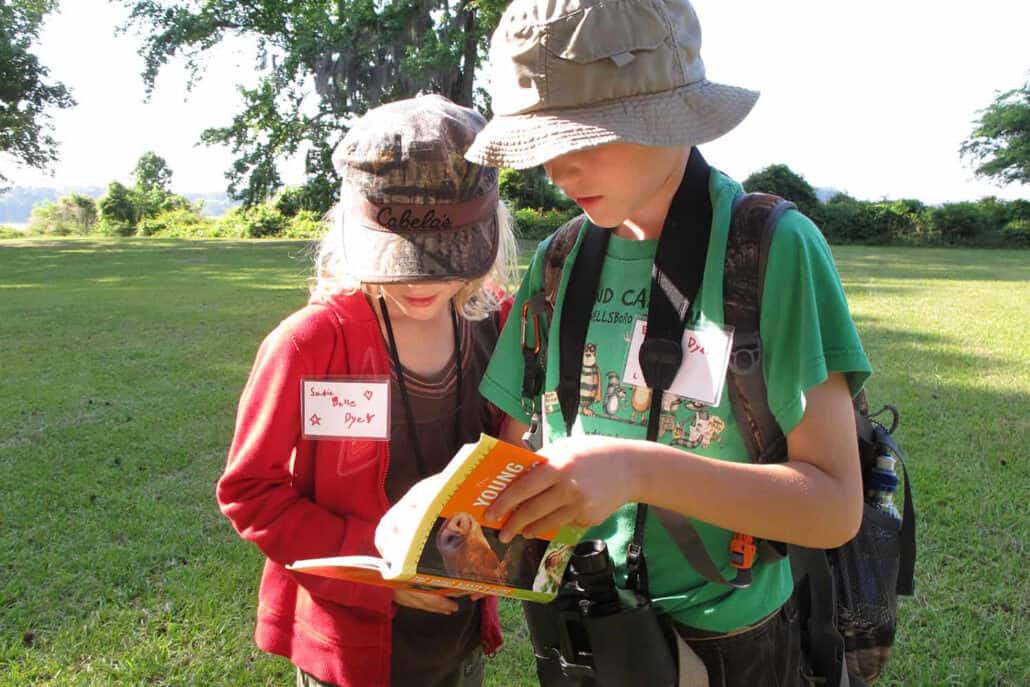The first step towards becoming a birder is getting your hands on a good field guide. A field guide is a collection of images, descriptive text, and range maps that helps a bird watcher identify birds. All birds have field marks (physical traits such as markings, shape, color) that are unique. These field marks, combined with other clues such as distribution, voice, and behavior, help a bird watcher identify the birds he or she sees.

Choosing a field guide
The ideal field guide is easy to use, portable, and accurate. We are lucky as birders that we have many excellent field guides from which to choose. We provide a list of some of the current field guides at the end of this article.
The MOST important thing about your field guide is that you have one that is appropriate for the region in which you live and watch birds. Today there are field guides for all of North America; for just the eastern or western half; for specific states or provinces, and even for smaller geographic areas, such as counties, birding trails, and specific refuges, parks, or preserves.
The SECOND most important thing is that your field guide is easy for you to use. Become familiar with its content and layout. When you have some non-birding time, flip through the guide and get to know where the sparrows are, where the owls are, where the ducks are – so you can find them quickly when you need to look up a bird.
Field guides are typically organized taxonomically. This means that related birds are grouped together in an order established by ornithologists going from the least-evolved birds (loons, grebes, waterfowl) to the most highly evolved birds (warblers, sparrows, finches). Many guides provide a color-tab key to help you find bird families quickly.
The THIRD most important thing to remember when using your guide in the field is: Look at the bird, not at the book. We often make the mistake, in our excitement at seeing an unfamiliar bird, of taking a quick glance at the bird and then dropping our binoculars to find it in the field guide. Frequently we don’t have enough visual information to make a positive identification, so we grab the binocs for another look and the bird is gone.
This is why we look at the thing with wings (the bird) until we’ve noted enough field marks to narrow our searching down in the field guide (which stays put because it does not have wings).
So bird watching goes something like this:
- See a bird.
- Find it in the binoculars.
- Look for field marks and other clues.
- Watch it a little longer, especially if it’s an unfamiliar species.
- Try to determine what type of bird it is: hawk, duck, heron, warbler, finch, etc.
- THEN reach for the field guide and find the matching species.
Recommended Field Guides
Here are some recommended field guides for young birders. Ask a parent or teacher to help you track one (or more) of these down at your local library, a good bookstore, or online.
The Young Birder’s Guide to Birds of North America, Houghton Mifflin Harcourt Publishing Company, Boston, MA.
The Peterson Field Guide Series, Houghton Mifflin Harcourt Co., Boston, MA.
Field Guide to Birds of North America, National Geographic Society, Washington, D.C.
Birds of North America and Eastern Birds, Golden Press, New York, NY.
The Stokes Field Guide to Birds, Little, Brown, Boston, MA.
Sibley Field Guides, Knopf, New York, NY.
Kaufman Field Guides, Houghton Mifflin Harcourt Publishing Company, Boston, MA.
Once you’ve got a field guide, you’ll be identifying birds in no time. Add a good pair of binoculars and you’ll be well on your way to becoming a pro birder.




